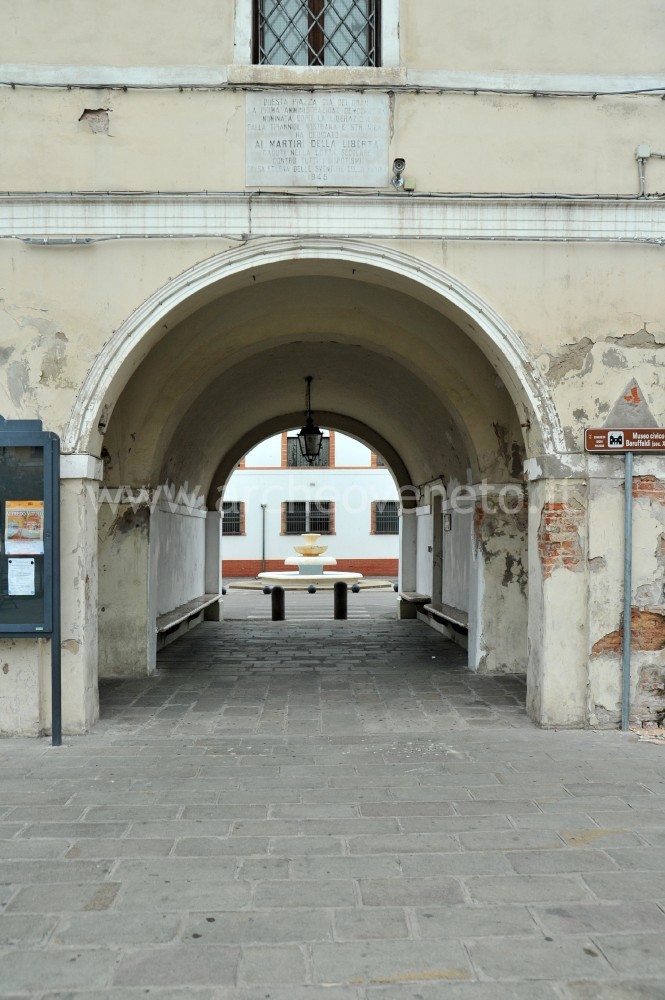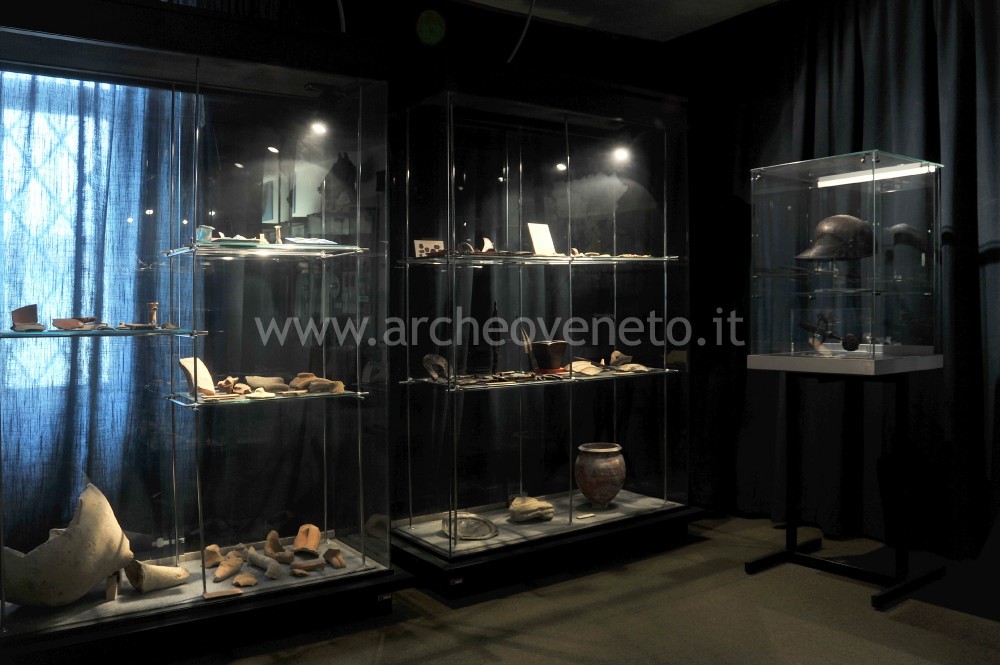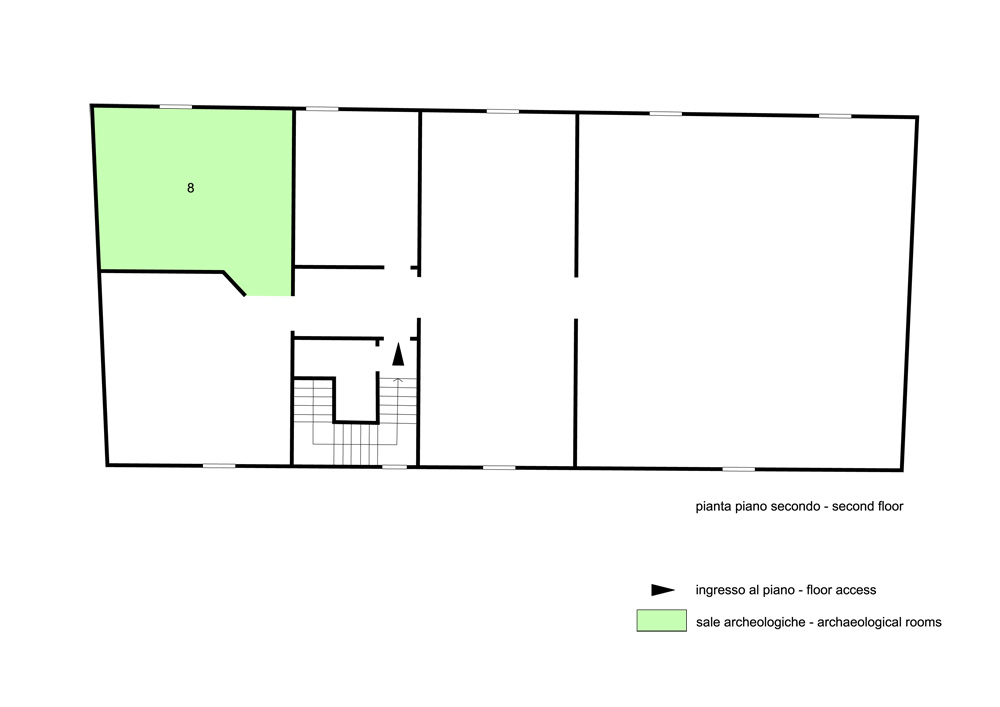|
|
File
"Antonio Eugenio Baruffaldi" Civic Museum – Badia Polesine
|
Piazza Vittorio Emanuele II – 45021 Badia Polesine (RO)
– Fax 0425 51923 |
  |
|
Summary

The “Antonio Eugenio Baruffaldi” civic museum is made up of 13 sections, which display objects referring to different historical periods (from the Italian unification to the second world war), in which the focus is on human beings, with their passions and their pains. The museum is also provided with a small room devoted to the most ancient history of the area surrounding Badia Polesine, in which it is possible to see prehistoric, roman and medieval objects.
Collection history
In the early 50’s Professor Ivan Tardivello started to collect a remarkable amount of objects, photographs ad documents, which in 1968 made up the “Civic collection”, displayed in some of the rooms of the Town Hall of the municipality of Badia Polesine. Thereafter the collection, which in the meantime had been further expanded, was moved several times, and finally in 1977, it was arranged in the building of the former Mount of Piety, which hosts it still today.
|

 This room contains the most ancient finds of the collection started by Prof. Ivan Tardivello. The first display case contains prehistoric artefacts of non-local origin, which include animal remains (horse tooth, wild boar mandible, deer antlers and sea shells) as well as flint and obsidian tools. This room contains the most ancient finds of the collection started by Prof. Ivan Tardivello. The first display case contains prehistoric artefacts of non-local origin, which include animal remains (horse tooth, wild boar mandible, deer antlers and sea shells) as well as flint and obsidian tools.
Three display cases are devoted to the finds of the Roman age (1st-2nd cent. A.D.); all of them were found thanks to the field walking activities carried out in the site Le Giare, in Salvaterra. In the first one, which is the same display case containing the prehistoric artefacts, it is possible to see some objects related to the domestic field: querns, pestles, sharpening stones (used to sharpen blades) and earthen loom weights. The second display case contains objects referring to a country settlement of the 1st-2nd cent. A.D.: some hexagonal floor tiles, a bicolour mosaic fragment, five stamped tiles and an earthen well brick with handle. There are also three examples of roman artistic culture: the base of a small aedicule with the remains of a relief figure and inscription, a fragment of a marble sculpture in the round (the right hand) and a cast of the roman altar depicting a bacchante (1st cent. A.D.), which was placed at the base of the bell tower of the Abbey of Vangadizza.
The third display case contains objects used in everyday life related to food preparation (fragments of mortar, strainer and cooking vessels), consumption (fragments of table pottery, including plates, cups and jugs) and transport (wine and oil amphoras).
The fourth display case (like the last two cases) contains either materials of the Bronze Age (fragments of pottery and bronze foils) or items dating back to the early Middle Ages and the Renaissance (bone and metal objects).
|

Admission: Negli orari di apertura
Ticket: No
 School access School access
Opening Days
| Tipology |
When |
Specs |
| Summer/Winter |
Thursday |
09.00 – 12.00 |
| Summer/Winter |
Sunday |
15.30 – 18.30 |
Recommended tour time (minutes): 15
 Toilet Toilet
 Brochure Brochure
Italian, English, French, German
 Captions under exhibits Captions under exhibits
Italian
 Multilingual ads: Francese Multilingual ads: Francese
Tedesco
Inglese
Brochures
 Guided Tours Guided Tours
 Educational activities Educational activities
 Educational workshops Educational workshops
 Library and documentation centre Library and documentation centre
The museum is provided with a library, an archive and a photographic archive.
 Other activities Other activities
| Bonetto J. 2009, Veneto (Archeologia delle Regioni d’Italia), Roma, pp. 386. |
|

